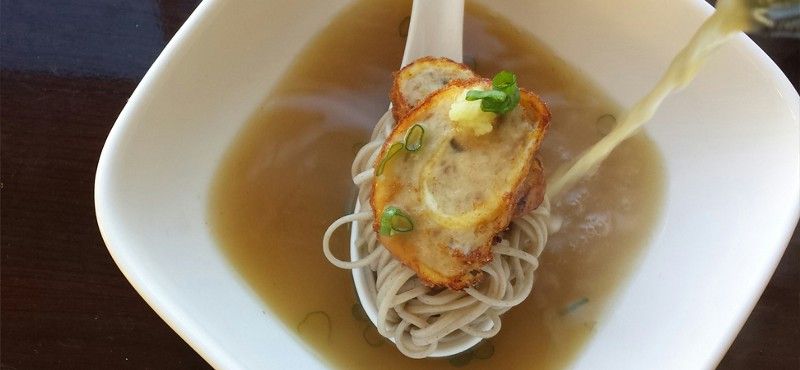Me Talk With Food

It astounds me that we have so many ways to communicate. Words, written and spoken. Body language. My favorite way to communicate is with food.
It astounds me that we have so many ways to communicate. Words, written and spoken. Body language. Art – theatre, dance, the visual dialogue of paint strokes and color. Whether we’re sharing an intimate one-on-one conversation or declaring a statement to the masses, we are graced with innumerable ways to do so.

My favorite way to communicate is with food. I like making food more than oil paintings or drawings because there’s a greater opportunity to inhabit the same plane as the receiver. They interact back.
I don’t want to be in a restaurant, hidden away in the kitchen. I want to be at the table, where you are.
Through my food, I communicate my life. How I grew up, where I grew up. Who my parents and grandparents are. I communicate where I’ve been – the South, where I fell in love with barbecue and frito pie, and to Barcelona where I learned what fried food should be. Hanoi, where vietnamese ladies cook the most flavorful pork sausages on the side of the road using a cinder block. I crib from the dozens of izakayas and sushi joints I’ve been to, but also the Olive Gardens and Panda Express of my awkward teenage years. I secretly love spam.
Having just been inspired by a fantastic restaurant meal, I riff on a particularly memorable sauce basing an entire menu off muhammara. My version: arbol, walnuts, beet, olive oil. No one else had heard of muhammara either, and I bring it to them just like it had been brought to me. I see muhammara everywhere now.
When I’m lazy and domestic, I roast chicken to slice into chicken noodle soup with cut lasagna noodles. I ladle the soup into bowls for the one or two friends I invite over, preferring to catch up over the ease of a couch rather than the bustling din of the bar.
I communicate how I’m feeling at the moment. When my relationship with my parents had become strained, I cooked the comfort food of my childhood. I spooned this rice congee and tea eggs and pork belly to those who gathered at my table.
When I’m feeling romantic and appreciative, I make the melty half-beef-half-pork burger from our first date spot, carefully slicing russet potato into cold peanut oil before gently heating it up into perfect french fries with truffle salt.
I feed people as a way of talking to them. It saddens me to think there are so many who don’t know this language, eating food every day but not hearing it murmur or shout. Heating ramen in a bowl for their child and not knowing how to transform it into food that says “I love you.”
I hold even more awe for the farmers and foragers who bring us these raw ingredients, the culinary equivalents of pastel and charcoal. They speak, too. They’re saying “Look at this, I climbed a slippery rock to bring you this. This is how much I like you.” And when we cook with these beautiful things, these found and cultivated objects, we are saying “Thank you for bringing me this, I will respect it and transform it and re-share in my own little way.”
When I am on the receiving end of all this sharing and re-sharing, I want to hear every story behind the food – behind the person feeding me. Food also gives us, after that first joyous bite, the invitation to ask.